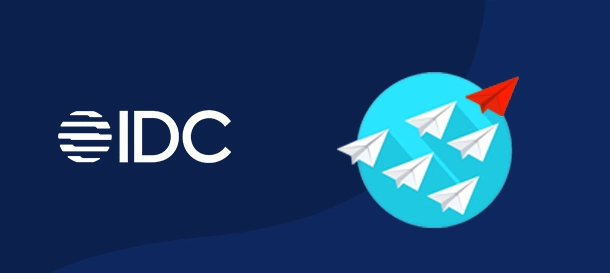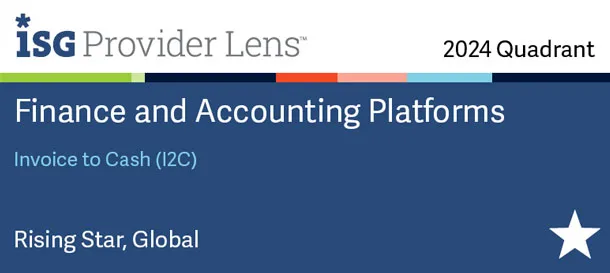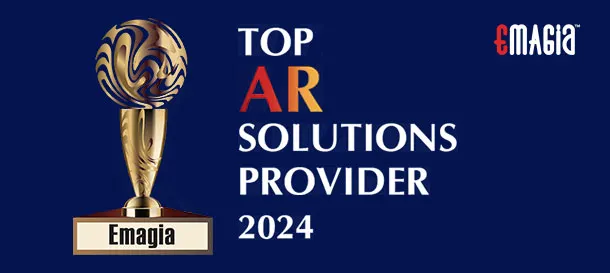Introduction
Managing overdue payments and outstanding invoices is one of the most critical yet challenging aspects of financial management. For businesses, a well-structured dunning process — the process of following up with customers who haven’t paid on time — is essential for maintaining healthy cash flow. However, many companies still face several hurdles in effectively managing dunning and ensuring that payments are collected in a timely manner.
In this blog, we will explore the common challenges businesses face with dunning, why these challenges can significantly impact your financial health, and how Emagia, a leader in AI-powered digital receivables automation, can help you overcome these challenges and streamline your dunning process.
What is Dunning?
Dunning is the process of communicating with customers to collect overdue payments for goods or services rendered. It typically involves a series of reminders, starting with gentle nudge emails or letters and escalating to stronger, more formal communications if payments remain unsettled.
A successful dunning process is vital for any organization as it ensures cash flow remains steady, reduces bad debt, and helps maintain a good relationship with customers.
Challenges in the Dunning Process
Despite its importance, businesses face numerous challenges in executing an effective dunning strategy. Let’s take a look at some of the most common obstacles CFOs and accounts receivable teams encounter.
1. Inefficient Manual Processes
One of the biggest challenges in dunning is the reliance on manual processes. Many companies still rely on spreadsheets, manual reminders, and repetitive tasks that are prone to human error. This can result in inconsistencies in follow-ups, delayed reminders, and missed opportunities for payment recovery.
The Impact:
- Time-consuming, requiring significant effort from your accounts receivable team.
- Increased likelihood of mistakes, such as missed reminders or incorrect customer data.
- Risk of overdue accounts piling up and leading to cash flow issues.
2. Customer Resistance and Communication Challenges
Not all customers are responsive to dunning efforts. Some may ignore the initial reminders, while others may resist paying for a variety of reasons — such as financial difficulties, disputes, or lack of awareness of payment terms. As a result, dunning efforts can stall, making it difficult to recover payments.
The Impact:
- Strained customer relationships.
- Lack of payment resolution, resulting in mounting overdue accounts.
- Increased frustration for the accounts receivable team, who have to deal with customer objections or pushback.
3. Inconsistent Follow-Up and Lack of Visibility
Inconsistency in following up on overdue accounts is another significant issue. Without a structured and automated system, businesses may fail to consistently follow up with overdue customers, which can allow debts to remain unpaid for longer periods. This problem is exacerbated when there is no real-time visibility into overdue payments or the dunning process itself.
The Impact:
- Payments take longer to recover, which harms cash flow.
- Difficulty tracking the progress of each dunning case.
- Increased risk of bad debt as accounts continue to age.
4. Balancing Aggressive Collection with Customer Retention
Finding the right balance between being persistent enough to recover payments while maintaining good customer relationships is a delicate art. Too aggressive a dunning process can alienate customers, while a too lenient approach may result in unrecovered debt.
The Impact:
- Strained relationships with valuable customers.
- Loss of business from customers who feel mistreated or frustrated.
- Negative impact on the company’s reputation.
5. Legal Compliance
In some cases, businesses may be unaware of the legal boundaries and requirements surrounding debt recovery. There are strict rules around how and when you can contact customers for overdue payments, especially concerning consumer protection laws. Missteps in this area can lead to legal issues, fines, or reputational damage.
The Impact:
- Potential legal consequences from non-compliance.
- Risk of customer disputes and legal action against your business.
- Increased legal costs if the issue escalates.
How Emagia Can Help Overcome Dunning Challenges
Fortunately, technology has evolved, and businesses can now leverage automation to solve these challenges. Emagia offers a sophisticated accounts receivable automation platform that tackles the common pain points associated with the dunning process.
Here’s how Emagia can create a positive impact:
1. Automated Dunning Process
Emagia automates the entire dunning process, from the first reminder to more formal communications. With automated workflows, you can schedule and send reminders at the right time, ensuring consistent follow-ups. By eliminating the need for manual intervention, Emagia ensures that no overdue accounts slip through the cracks, and payments are collected more efficiently.
How it Helps:
- Reduces human error: Automation eliminates mistakes that can occur with manual processes, such as missing reminders or incorrect customer data.
- Saves time: Your accounts receivable team no longer needs to manually chase payments, allowing them to focus on other strategic tasks.
- Improves consistency: Automated reminders ensure that your company follows a consistent process for each customer.
2. Personalized Customer Communications
Emagia’s platform allows you to tailor dunning communications based on customer behavior, payment history, and outstanding balance. This personalization improves the customer experience by ensuring that your communications are relevant and respectful.
How it Helps:
- Reduces customer resistance: Personalized messages are more likely to resonate with customers, making them more willing to pay.
- Enhances customer relationships: By showing empathy and understanding in your communications, you can maintain strong customer relationships even during the dunning process.
- Improves collection success: Tailored communications make customers more likely to respond and settle their accounts.
3. Real-Time Tracking and Analytics
Emagia provides real-time visibility into the status of each overdue account. This allows you to track progress, measure the effectiveness of your dunning strategy, and gain insights into payment patterns. With this data, you can adjust your strategy to improve results and reduce the risk of bad debt.
How it Helps:
- Improves decision-making: Real-time data helps you make informed decisions about when and how to escalate your dunning process.
- Boosts efficiency: With clear tracking and performance analytics, you can identify bottlenecks and optimize your process.
- Reduces Days Sales Outstanding (DSO): By actively monitoring the dunning process, you can accelerate collections and improve cash flow.
4. Compliance Management
Emagia’s platform is designed to ensure that your dunning process is fully compliant with local and international regulations. From adhering to consumer protection laws to maintaining best practices in debt recovery, Emagia helps you navigate the complex legal landscape of dunning and collections.
How it Helps:
- Reduces legal risk: Emagia ensures your dunning practices comply with the law, protecting your business from legal consequences.
- Prevents disputes: By following compliant processes, you reduce the likelihood of customers challenging your dunning efforts.
- Promotes ethical collections: Emagia helps you strike the right balance between persistence and professionalism.
5. Flexible Payment Options
Emagia enables you to offer flexible payment terms to your customers, including installment plans or deferred payment options. This can help customers who are struggling to pay in full and can increase the likelihood of payment recovery.
How it Helps:
- Improves collection rates: Offering flexible terms encourages customers to pay over time, reducing the likelihood of non-payment.
- Builds goodwill: Customers who are given flexible options are more likely to remain loyal and satisfied with your service.
- Prevents bad debt: Structured payment options help ensure that overdue accounts are settled without escalating to legal action.
Conclusion
The dunning process is critical for maintaining healthy cash flow, but it’s not without its challenges. From manual inefficiencies to customer resistance, businesses face several hurdles that can impact their bottom line. However, with the right tools and technology, such as AI-powered digital receivables automation platform, these challenges can be effectively managed.
Emagia helps businesses automate, personalize, and optimize the dunning process, allowing CFOs and accounts receivable teams to recover overdue payments more efficiently, reduce DSO, and maintain strong customer relationships. By leveraging Emagia, your company can transform the dunning process into a seamless, customer-friendly, and legally compliant experience, ultimately improving cash flow and minimizing bad debt.
Are you ready to revolutionize your dunning process and streamline your accounts receivable? Emagia is here to help.







